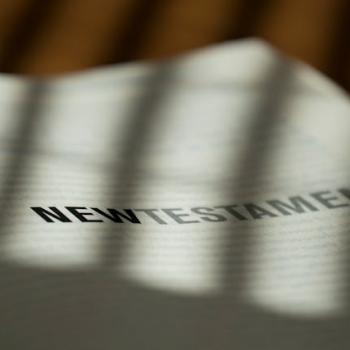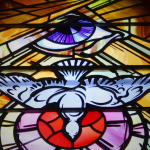Last week, we explored the world of New Testament parables. The parables of Jesus are among the most famous stories in the Bible. Short, sweet, to-the-point, and relatively easy to understand (at least most of the time), parables are great stories that illustrate important points of faith. As an unexpected surprise, however, there are parables outside of the New Testament! the tradition pre-dates New Testament times. Likewise, there are various examples of parables – or stories like them – both ancient and modern, and religious and non-religious.
Here we are going to look at parables outside the New Testament, exploring their various literary forms and functions.

Old Testament symbolic stories and parables
Symbolic stories are much of what they sound like – stories that use symbols. Rather than literally using people to make a point, symbols are used to convey the same message. Symbolic stories vary from parables in that parables always use people as the main characters. They are alike in that they use allegorical language to convey an essential message. In many ways, symbolic stories are precursors to parables.
In the Old Testament, we see a number of symbolic stories:
- Judges 9:7-20 (depicts the futility of crowning kings)
- 2 Samuel 12:1-4 (a story of a single lamb stolen by a wealthy neighbor to set before a guest, used to illustrate David’s sin with Bathsheba)
- 2 Samuel 15:6-8 (the wise woman of Tekoah induced David to make peace with Absalom)
- 1 Kings 20:39-40 (the prophet’s disciple showing Ahab his wrong course)
- Isaiah 5:1-6 (a failing vineyard depicts Israel’s degeneracy)
- Isaiah 28:24-28 (a farmer’s methods show God’s orderly activity)
There are also four proverbs that specifically relate to Babylon in some way:
- Isaiah 14:4-21 (The parable against the King of Babylon)
- Ezekiel 17:1-10 (the riddle to the house of Israel)
- Ezekiel 24:3-14 (the parable to the rebellious house)
- Habakkuk 2:6-20 (the taunting riddle)
Judaism
Closest in form to parables are the Jewish tradition of mashalim. Jews consider Old Testament symbolic stories and parables as part of mashalim. More than just one kind of faith story, mashalim is an entire literary body of short, moral lessons. A mashal (singular form) might be a short proverb or story with a moral lesson or religious allegory. Under the heading of mashalim include various rhetoric forms, including Jewish parables, riddles, fables, and symbolic stories. These stories were based on specific illustrations common at the time, thus making them easy to understand and follow.
Mashalim exist to help people understand Torah (or law), and the essence of it within their lives. The tradition of these teachings became prominent throughout the Talmud, or teachings of Jewish law, down through the centuries. Within the Talmud and the Midrash, there is almost always a parable to go along with a moral teaching or statement.
One of the most famous Hasidic parables is The Rooster Prince.
Apocryphal writings
The Old Testament apocryphal writings and New Testament apocryphal Gospels all contain parables. As the Greek writing form grew in popularity, we see it emerge more frequently. We also see it overlap, as with symbolic stories. Among Old Testament apocrypha, we find:
- 1 Enoch 85-90 (a fable depicting the history of Israel with animal characters)
- The Wisdom of Solomon (an allegory about the pursuit of wisdom and righteousness)
- The book of Sirach (a book containing statements about the value in parables)
As parables were more common in New Testament times, there are many different parables found outside the New Testament in apocryphal literature. Some of these parables overlap with Biblical ones, while others are unique. These include:
- Didache 1-6 (The Parable of the Two Ways [life and death])
- The Gospel of Thomas (contains 15 parables, 11 of which are found in the canonical Gospels; others include the Parable of the Assassin and the Parable of the Empty Jar)
- The Apocryphon of James (contains the Parable of the Ear of Grain, the Parable of the Grain of Wheat, and the Parable of the Date-palm Shoot)
Islam
There are parables found in the Qur’an in a few places:
- Q14:32-45 (Parables of the Good and Evil Tree, of the Two men, and of the Spider’s House)
- Q16:77 (the Parable of the Slave and his Master and the Parable of the Blind Man and the Sighted)
Buddhism
Buddhist parables tend to resemble a mixture of literary genres, including symbolic stories, fables, and allegories. They also vary in length and are sometimes longer than western parables. Some more famous ones include:
The Seven Great Parables of the Lotus Sutra, the Parable of the Poisoned Arrow, and the Parable of the Great Raft.
Other parables
Parables were also found in Greece and Persia. In modern times, philosophical parables exist. The most famous is the Parable of the Broken Window, which illustrates why the costs of repairing destruction are harmful to society.
What’s your favorite parable?
In studying parables the world over, we can see how important they are. There are lots of parables outside the New Testament. What’s your favorite parable?
















